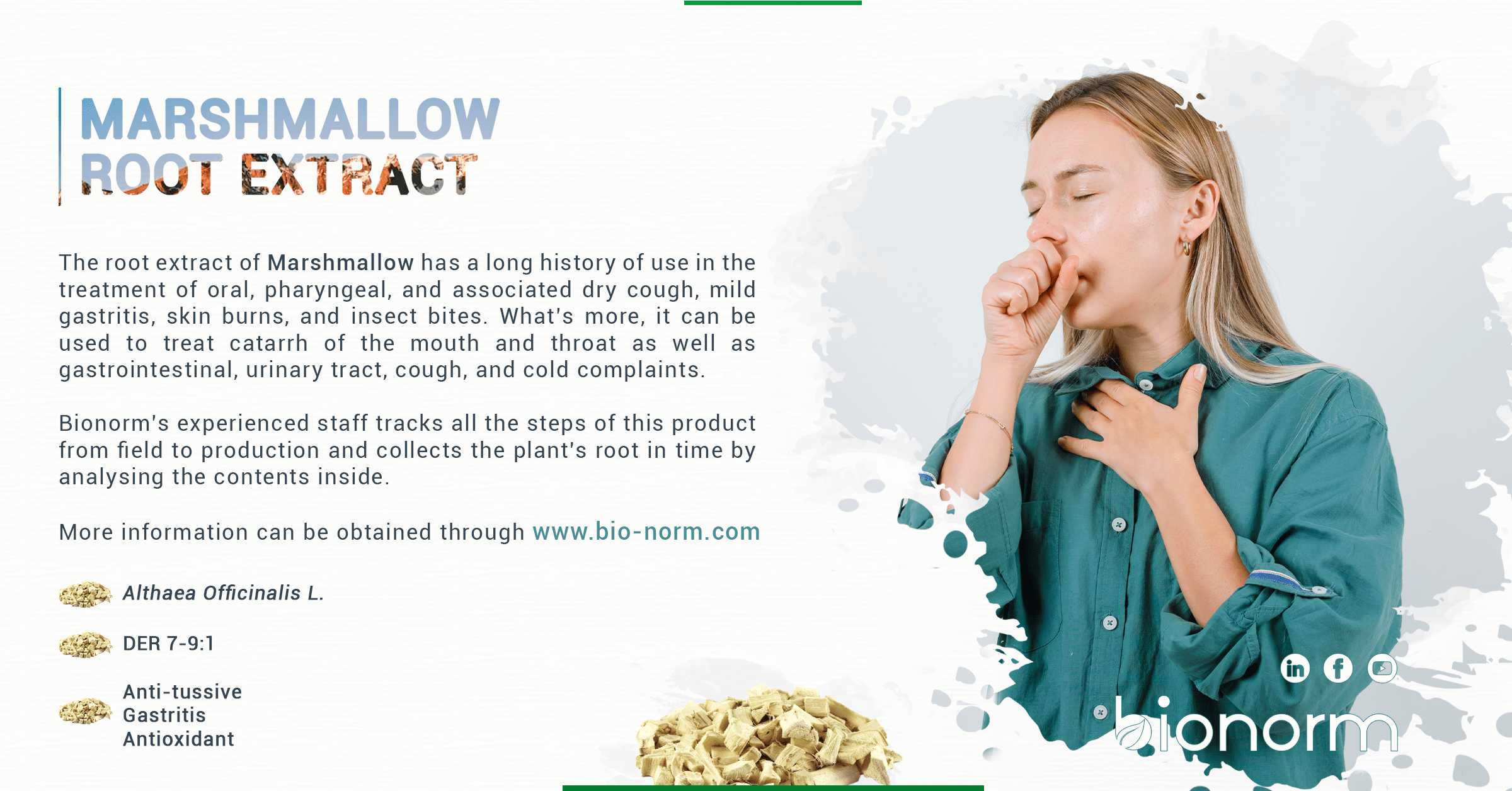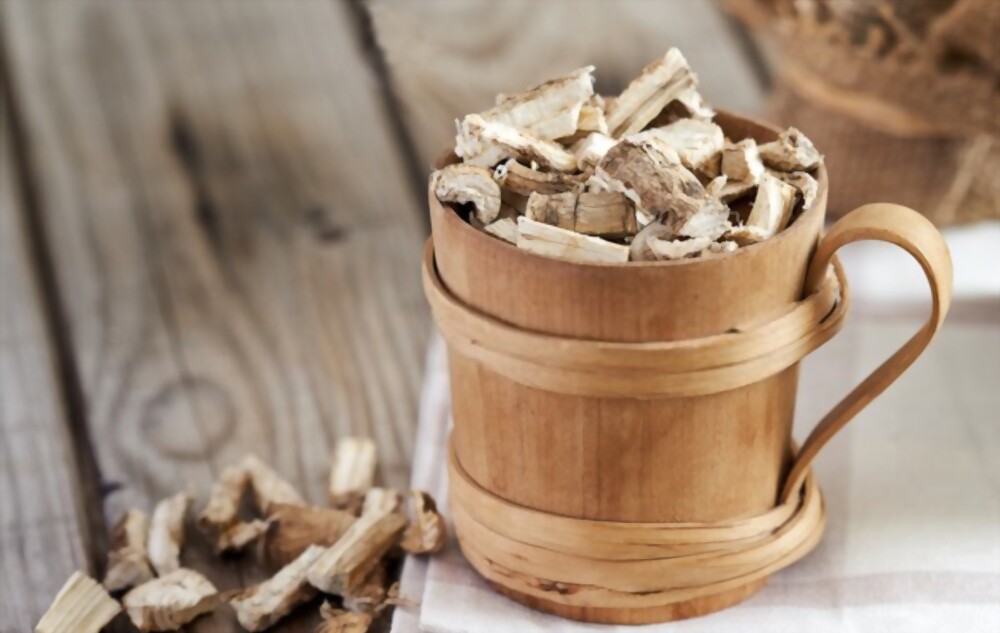 Marshmallow Plant
Marshmallow Plant
Marshmallow root extract is produced from the plant Althea officinalis, which is a perennial shrub that belongs to the Malvaceae family. The Marshmallow plant grows up to 1-2 meters tall, and its pale blush to pink flowers bloom in summer. This plant is not known to be invasive and can be seen growing along a roadside or in a meadow. Generally, Marshmallow plants grow in wet areas and require full sun.
Medicinal Usage
Marshmallow root has a use since ancient Egyptian times. Around 2000 B.C., the Egyptians were the first to use this plant to cure cough, sore throats, and heal wounds. In the middle of the 1800s, marshmallow root has made its way to France. Today it is used for many effects in medicine and also in the food industry and supported with scientific researches. A study published in 2005 has found that a herbal syrup with marshmallow root has a significant effect on relieving coughs in 62 participants. (1) A review published in 2013 showed that using an ointment that has marshmallow root extract inside has reduced skin irritation due to the anti-inflammatory activity of Althea root extract. (2) An animal study stated that marshmallow root extract has significantly decreased the growth of gram-positive bacteria, which are responsible for more than fifty per cent of infections. Another finding of this study was that when Marshmallow root extract had applied to the wounds of the rats, it reduced the inflammation and sped up the healing time. (3) Also, a different study has claimed that the Marshmallow root can be used as a pain reliever since it may soothe the conditions that cause pain or irritation like throat. (4) To conclude the root extract of Althaea officinalis L. has a long history of use in the treatment of oral, pharyngeal, and associated dry cough, mild gastritis, skin burns, and insect bites. Additionally, it is used to treat catarrh of the mouth and throat, as well as gastrointestinal and urinary tract complaints, as well as inflammation, ulcers, abscesses, burns, constipation, and diarrhea.
Chemistry Behind
The root of Althaea officinalis L. contains mucilage, glycosides, polysaccharides such as D-glucans, rhamnogalacturonan, arabinans, phenolic acids such as caffeic, p-coumaric, ferulic, p-hydroxybenzoic, salicylic, syringic, p-hydroxyphenylacetic and vanillic acids. Bionorm’s experienced team produces high-quality Marshmallow root extract with scientific knowledge while caring about sustainability. To have more information about Bionorm’s Marshmallow root extract, feel free to visit https://bio-norm.com/product/marshmallow-root-extract/.
References
- Büechi S, Vögelin R, von Eiff M, M, Ramos M, Melzer J: Open Trial to Assess Aspects of Safety and Efficacy of a Combined Herbal Cough Syrup with Ivy and Thyme. 2005;12:328-332. doi: 10.1159/000088934
- Dawid-Pać, R. (2013). Review paperMedicinal plants used in treatment of inflammatory skin diseases. Advances in Dermatology and Allergology/Postępy Dermatologii i Alergologii, 30(3), 170-177. https://doi.org/10.5114/pdia.2013.35620
- Rezaei, M., Dadgar, Z., Noori-Zadeh, A., Mesbah-Namin, S. A., Pakzad, I., & Davodian, E. (2015). Evaluation of the antibacterial activity of the Althaea officinalis L. leaf extract and its wound healing potency in the rat model of excision wound creation. Avicenna journal of phytomedicine, 5(2), 105–112.
- Bahmani, M., Zargaran, A., & Rafieian-Kopaei, M. (2014). Identification of medicinal plants of Urmia for treatment of gastrointestinal disorders. Revista Brasileira de Farmacognosia, 24(4), 468–480. doi:10.1016/j.bjp.2014.08.001

